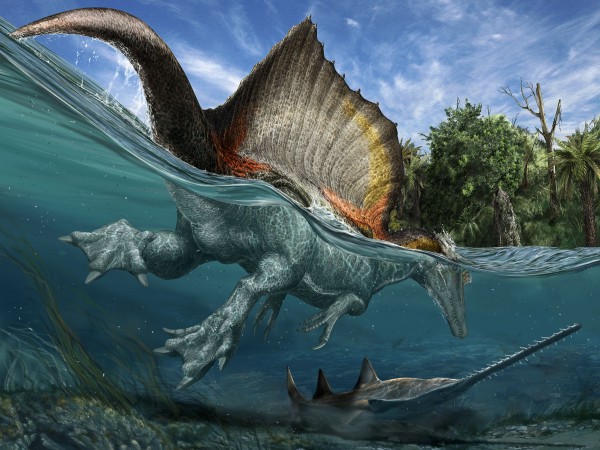In the film Jurassic Park III, a giant sail-backed dinosaur called Spinosaurus fights a terrestrial Tyrannosaurus—and wins. But a study published online today in Science shows that the 15-meter-long Spinosaurus (shown in this artist’s reconstruction) had adaptations to life both in the water and on land, suggesting that the fierce beast was more of a danger to fish than to any terrestrial creature. In 97-million-year-old freshwater sediments in eastern Morocco, researchers discovered new Spinosaurus fossils, including parts of the skull, vertebral column, pelvis, and limb bones. The researchers were able to see signs of watery adaptation not seen in other dinosaurs: a small nostril located far back on the head, apparently to limit water intake; relatively long forelimbs; big flat feet suitable for paddling as well as walking on muddy ground; and very dense limb bones, which would have allowed Spinosaurus to submerge itself rather than float at the surface. The adaptations resemble those of early whales and today’s hippopotamus, and make Spinosaurus the only dinosaur known to swim, the researchers say.
Ref:Article by Key: WFS,Riffin T Sajeev,Russel T Sajeev,World Fossil Society,



 December 31st, 2015
December 31st, 2015  Riffin
Riffin 
 Posted in
Posted in  Tags:
Tags: 